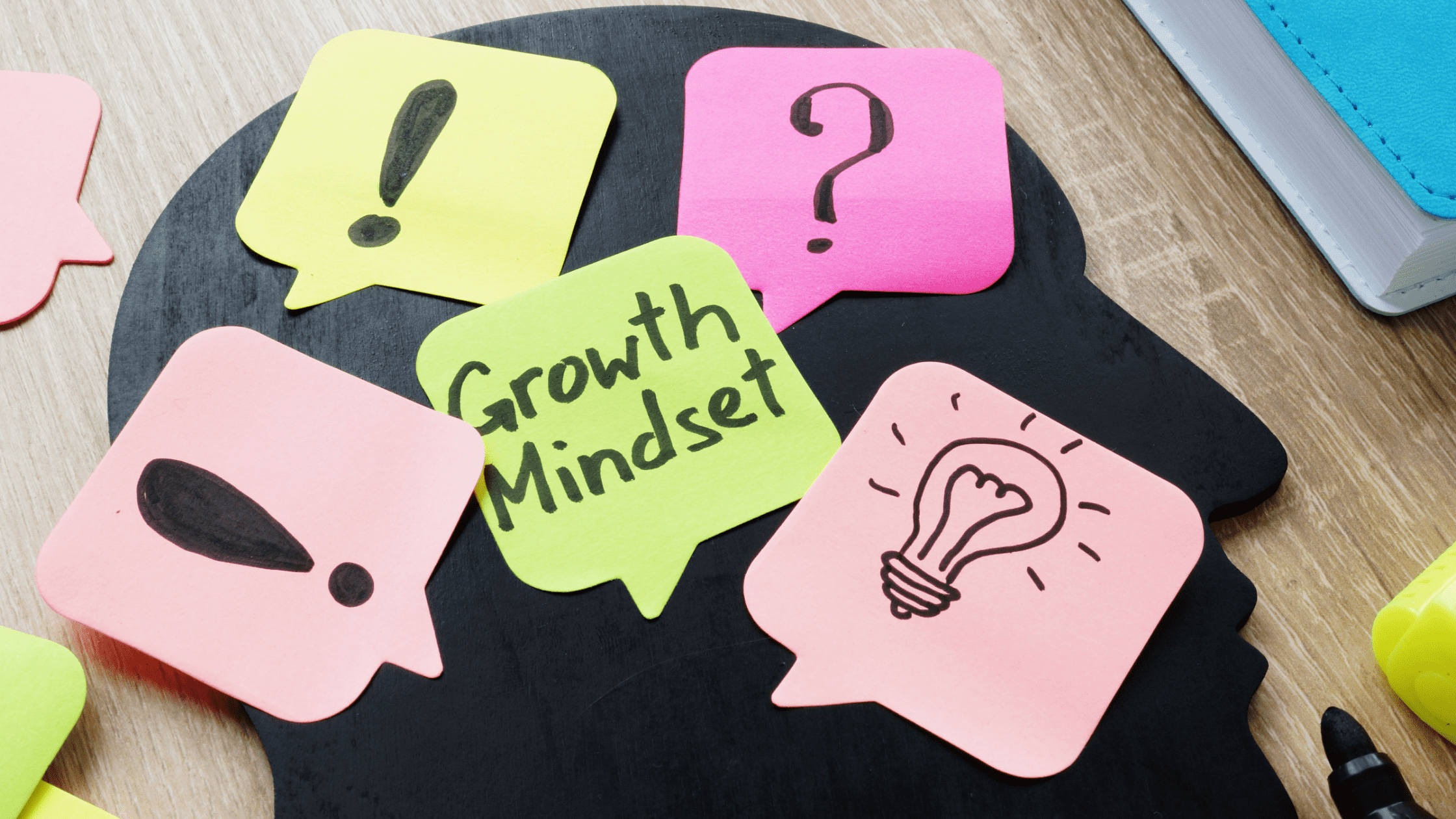Motivated employees tend to be more productive, engaged, and committed to their work, which can lead to better business outcomes. However, motivating employees is not always an easy task. There are several factors that can influence an employee’s level of motivation, including their needs and talents. In this blog post, we will discuss the importance of understanding employee needs and talents and how they can determine their level of motivation at work. Employee Needs and Motivation Employees have various needs that must be met for them to be motivated in the workplace. These needs can be divided into three categories based on Abraham Maslow’s hierarchy of needs: basic psychological needs, social needs, and self-actualization needs. Basic psychological needs include the need for autonomy, competence, and relatedness. Autonomy refers to the need for employees to have control over their work environment and decision-making processes. Competence refers to the need for employees to feel capable and effective in their work. Relatedness refers to the need for employees to feel a sense of belonging and connection with their colleagues. Social needs include the need for recognition, respect, and social support. Employees want to feel that their contributions are valued and recognized by their colleagues and superiors. Respectful and supportive work relationships are also important for employee well-being and motivation. Self-actualization needs include the need for personal growth and development. Employees want to feel that their work is meaningful and contributes to their personal and professional growth. Employee Talents and Motivation In addition to their needs, employees also have unique talents that can contribute to their level of motivation. Talents refer to an employee’s natural abilities, skills, and strengths. When employees are able to use their talents in their work, they tend to feel more engaged and motivated. Managers can identify employee talents through various methods, including talent assessments, performance reviews, and informal conversations. By understanding employee talents, managers can assign tasks that align with their strengths and provide opportunities for skill development and career growth. Talents, Needs and Motivation Employee needs and talents can have a significant impact on their level of motivation in the workplace. There are several studies and research that have explored the relationship between employee needs, talents, and motivation. Here are a few examples: “The Impact of Employee Talents and Needs on Organizational Performance” by J. Bradley Cousins and Brian J. Atwater (Journal of Applied Psychology, 1996). This study found that when employees’ talents and needs were aligned with their job responsibilities and the goals of the organization, their motivation and performance were significantly higher. “The Effects of Employee Needs on Motivation and Job Satisfaction” by William S. Hesterly and Jay B. Barney (Academy of Management Journal, 1994). This study found that when employees’ needs for autonomy, competence, and relatedness were met, their motivation and job satisfaction were higher. “Motivating Knowledge Workers: The Challenge for the 21st Century” by Daniel H. Pink (Harvard Business Review, 2001). This article explores the importance of aligning employees’ intrinsic motivations (such as their talents and passions) with their job responsibilities to drive motivation and productivity. “The Impact of Employee Needs and Talents on Organizational Culture” by Denise M. Rousseau (Organizational Dynamics, 1985). This study found that when organizations were able to create a culture that supported employees’ needs and talents, employees were more motivated and engaged. These are just a few examples, but there is a growing body of research that supports the link between employee needs, talents, and motivation. Let’s take a look at how this relationship can play out in the workplace: Alignment with job responsibilities: When employees are given job responsibilities that align with their talents and abilities, they are more likely to feel confident in their ability to perform well. This can lead to increased motivation as they feel a sense of pride and accomplishment in their work. Autonomy and control: Employees who feel that they have some level of control over their work environment and job responsibilities tend to be more motivated. This sense of autonomy can also help to satisfy their need for self-determination and independence. Competence and mastery: Employees who feel that they are developing new skills and mastering challenging tasks tend to be more motivated. This sense of competence can also help to satisfy their need for personal growth and development. Social support and connection: Employees who feel that they are part of a supportive and connected workplace tend to be more motivated. This sense of relatedness can also help to satisfy their need for social connection and belonging. Alignment with personal values and passions: When employees feel that their work aligns with their personal values and passions, they are more likely to feel a sense of purpose and meaning in their work. This can lead to increased motivation as they feel that their work has a greater purpose beyond just a paycheck. Overall, when employees’ needs and talents are aligned with their job responsibilities and the goals of the organization, they are more likely to be motivated and engaged in their work. Employers can support this by providing opportunities for employees to develop their skills, offering autonomy and control over their work environment, and fostering a positive and supportive workplace culture. Do you want to create a workplace culture that supports the needs and talents of your team? If so, our Motivation Factor at Workplace workshop is just what you need! Contact us for more info.
The Power of Yet: How Growth Mindset Can Propel You to Excel in Life and Business
Growth mindset refers to the belief that individuals can develop their abilities and intelligence through hard work, dedication, and a willingness to learn from failure. This concept was popularized by Stanford psychologist Carol Dweck, who described it as the opposite of a fixed mindset, where individuals believe that their abilities and intelligence are predetermined and cannot be changed. In a growth mindset, people embrace challenges, persevere through obstacles, and view failures as opportunities to learn and improve. Adopting a growth mindset can lead to greater success in both personal and professional endeavors, as individuals are more likely to take on new challenges and see them through to completion. Fixed Mindset vs Growth Mindset Fixed mindset and growth mindset are two different beliefs about personal abilities and intelligence. Individuals with a fixed mindset tend to believe that their abilities and intelligence are predetermined and cannot be changed. They view their successes and failures as a reflection of their inherent talents and qualities, rather than their effort or strategies. As a result, they may avoid taking on new challenges or risk failure to avoid appearing incompetent. On the other hand, individuals with a growth mindset believe that they can develop their abilities and intelligence through hard work, dedication, and a willingness to learn from failure. They embrace challenges, persevere through obstacles, and view failures as opportunities to learn and improve. They focus on effort and strategies, rather than their innate talents, as the key to success. The difference between these two mindsets can have a significant impact on personal and professional growth. Fixed mindset individuals may limit their potential by avoiding challenges or taking a narrow view of their abilities, while those with a growth mindset tend to be more open to new experiences and opportunities for growth. By adopting a growth mindset, individuals can develop a more positive attitude toward learning and personal development, leading to greater success and fulfillment in life. The Importance of Growth Mindset Having a growth mindset is essential for personal and professional growth. When we believe that we can develop our abilities and intelligence through hard work and dedication, we become more open to new experiences and opportunities for growth. This leads to a more positive attitude toward learning and personal development, which in turn can lead to greater success and fulfillment in life. One of the most significant benefits of having a growth mindset is resilience in the face of failure. When we view failure as an opportunity to learn and improve, we are more likely to persevere through obstacles and come out stronger on the other side. This can lead to greater confidence and a willingness to take on new challenges. Another benefit of having a growth mindset is increased creativity and innovation. When we believe that our abilities are not fixed, we become more open to new ideas and approaches to problem-solving. This can lead to breakthroughs and advancements that might not have been possible with a fixed mindset. Additionally, having a growth mindset can improve relationships and communication skills. When we are open to feedback and willing to learn from others, we can develop stronger bonds with colleagues, friends, and family members. This can lead to greater collaboration, empathy, and understanding. Cultivating Growth Mindset Here are some of the strategies organizations can implement in order to cultivate growth mindset: Promote a culture of learning and development: Encourage employees to take on new challenges and seek out opportunities for growth, such as training programs or skill-building workshops. Encourage risk-taking and experimentation: Create a safe space for employees to try out new ideas and approaches without fear of failure or judgment. Provide constructive feedback: Encourage managers and colleagues to provide feedback that is specific, actionable, and focused on improvement rather than criticism. Celebrate effort and progress: Recognize and reward employees for their hard work and progress, rather than just their final outcomes. Foster collaboration and teamwork: Encourage employees to work together to solve problems and share knowledge and expertise. Model growth mindset behaviors: Leaders and managers should model growth mindset behaviors, such as openness to feedback, a willingness to learn, and resilience in the face of failure. Provide opportunities for reflection and self-assessment: Encourage employees to reflect on their progress and identify areas for improvement, and provide tools such as self-assessment surveys to support this. Encourage a growth mindset language: Use language that reinforces a growth mindset, such as “not yet” instead of “failed” or “fixed” mindset statements. By implementing these strategies, organizations can cultivate a growth mindset culture that promotes learning, development, and innovation, leading to better outcomes for both employees and the organization as a whole. PEDALS has helped many organizations in cultivating growth mindset among their leaders. Contact us today to learn more about how we can do the same for you.
The Culture of Learning: How to Stay Ahead in a Rapidly Changing Business Environment
In today’s rapidly evolving business landscape, the concept of culture of learning has become increasingly critical for organizations looking to remain competitive and adapt to changing circumstances. A culture of learning refers to an environment in which continuous learning and development are actively encouraged and integrated into the daily operations of an organization. Developing such a culture involves fostering a mindset that values learning and innovation, encouraging collaboration and experimentation, and providing ample opportunities for employees to acquire new skills and knowledge. One of the most significant benefits of creating a culture of learning is that it helps organizations stay relevant and competitive in an ever-changing business environment. As new technologies and techniques emerge, organizations that have developed a culture of learning can quickly adapt and adopt new approaches, ensuring that they remain at the forefront of their respective industries. This can be especially important in industries where technological advancements are occurring rapidly, such as the tech industry. Another key benefit of developing a culture of learning is that it can enhance employee engagement and retention. Employees who feel that their organization values their growth and development are more likely to feel invested in their work and to remain with the company over the long term. This can help organizations reduce turnover and improve overall morale and job satisfaction. So, how can organizations develop a culture of learning? There are several key strategies that can be effective in fostering a learning mindset among employees and building a culture that prioritizes continuous learning and development. First, organizations should provide ample opportunities for employees to acquire new skills and knowledge. This might include offering training programs, encouraging participation in conferences and workshops, or providing access to online learning resources such as webinars, e-learning modules, and podcasts. By offering a range of learning options, organizations can accommodate different learning styles and preferences and ensure that employees have the resources they need to develop their skills. Second, organizations should encourage a mindset of experimentation and innovation. This might involve setting aside time for employees to work on projects that are outside of their usual job responsibilities or encouraging employees to explore new approaches to problem-solving. By creating a culture that values innovation and experimentation, organizations can empower employees to take risks and learn from both their successes and failures. Third, organizations should prioritize collaboration and knowledge-sharing. This might involve implementing knowledge management systems, creating communities of practice, or setting up cross-functional teams to work on projects together. By fostering a culture of collaboration and knowledge-sharing, organizations can ensure that employees are learning from one another and that knowledge is being transferred throughout the organization. Finally, it’s essential to recognize and reward employees for their learning and development efforts. This might involve offering promotions or pay raises based on skills acquisition, creating awards or recognition programs for employees who excel in learning and development, or simply acknowledging and celebrating employee achievements. By recognizing and rewarding employees for their learning and development efforts, organizations can further reinforce the importance of continuous learning and create a positive feedback loop that encourages further growth and development. Case Example: AirBnB’s Culture of Learning One example of an organization that has successfully developed a culture of learning is Airbnb. From its early days as a startup to its current status as a global hospitality giant, Airbnb has consistently prioritized employee learning and development as a key driver of its success. One way in which Airbnb has fostered a culture of learning is by providing employees with ample opportunities for training and development. For example, the company offers a variety of courses through its “Airbnb Academy,” an internal learning and development program that provides employees with access to a range of training modules and workshops on topics such as leadership development, technical skills, and cross-functional collaboration. The company also encourages employees to attend conferences and events, and to take advantage of online learning resources. In addition to formal training programs, Airbnb also places a strong emphasis on experimentation and innovation. The company encourages employees to take risks and try new approaches to problem-solving, and provides them with the resources and support they need to do so. For example, the company’s “Hack-a-thon” events encourage employees to work on cross-functional projects and experiment with new technologies and approaches. Airbnb also places a strong emphasis on collaboration and knowledge-sharing. The company’s internal communication platform, known as “Chime,” provides employees with a forum for sharing information and ideas, and encourages collaboration and communication across teams and departments. The company also holds regular “brown bag” sessions, in which employees can share their expertise and learn from one another. Finally, Airbnb recognizes and rewards employees for their learning and development efforts. The company offers a range of career development opportunities, including mentorship programs and leadership training programs, and provides employees with regular feedback on their performance. The company also celebrates employee achievements and provides opportunities for recognition and advancement based on skills and performance. Through its focus on employee learning and development, Airbnb has been able to build a strong culture of innovation, collaboration, and continuous learning. This culture has been a key factor in the company’s success, helping it to stay ahead of competitors and adapt to changing market conditions. By prioritizing employee learning and development, Airbnb has created a culture in which employees are empowered to take risks, experiment with new approaches, and contribute to the company’s ongoing success. Developing a culture of learning is critical for organizations looking to remain competitive and adapt to changing circumstances. By fostering a mindset that values learning and innovation, encouraging collaboration and experimentation, and providing ample opportunities for employees to acquire new skills and knowledge, organizations can build a culture that prioritizes continuous learning and development. Doing so can lead to a range of benefits, including increased employee engagement and retention, improved organizational agility, and better overall performance. PEDALS offers companies a way to stay ahead of the curve and adapt to the evolving workforce. Contact us today to
Gen Z in the Workplace: How to Attract and Keep the Best and Brightest
The dynamics of the workplace have undergone a radical shift in the last few decades with the emergence of a new generation of employees known as “Generation Z.” Born between 1997 and 2012, Gen Z is the youngest demographic cohort to enter the workforce. While much has been said about this generation’s work ethics, attitudes, and preferences, the question remains: what do studies say about Gen Z in the workplace, and what can companies do to retain them? The Future is Here: Understanding and Retaining Gen Z in the Workforce According to a recent survey conducted by Deloitte, Gen Z has a distinct set of priorities when it comes to employment. The study found that 74% of Gen Z respondents are concerned about job stability, while 80% prioritise salary and benefits. However, salary and job stability are not the only factors that influence Gen Z’s decision to stay with a company. The report also showed that Gen Z is seeking employers who value work-life balance, diversity and inclusiveness, and possibilities for professional advancement. Another study conducted by IBM found that Gen Z is more likely to be engaged in their work when they are given opportunities to make a positive impact on society. This finding highlights the importance of corporate social responsibility and its role in attracting and retaining Gen Z employees. So, what can companies do to retain Gen Z employees? Here are a few suggestions based on the research: Offer competitive compensation and benefits packages: As mentioned earlier, Gen Z places a high value on salary and job stability. Hence, companies that provide Gen Z workers with competitive pay scales and extensive benefits (including health insurance, retirement plans, and paid time off) are more likely to keep them on board. Prioritize work-life balance: Gen Z is seeking companies that understand the importance and significance of work-life balance to them. This can be achieved by offering flexible schedules, remote work options, and generous time off policies. Embrace diversity and inclusion: Gen Z is the most diverse generation in history, and they are looking for employers who prioritise diversity and inclusion in the workplace. This can be achieved by implementing inclusive hiring practices, providing diversity and inclusion training, and creating an inclusive culture. Provide career growth opportunities: Gen Z is ambitious and looking for opportunities to grow in their careers. Companies that offer professional development opportunities, mentorship programs, and leadership training are more likely to retain Gen Z employees. Emphasize corporate social responsibility: As mentioned earlier, Gen Z is more likely to be engaged in their work when they are given opportunities to make a positive impact on society. Companies that prioritise corporate social responsibility and give employees opportunities to participate in volunteer programmes or sustainability initiatives are more likely to retain Gen Z employees. By implementing the practices suggested above, companies can attract and retain Gen Z employees, who are poised to become the future leaders of the workforce. PEDALS offers companies a way to stay ahead of the curve and adapt to the evolving workforce. Our expertise and knowledge will help your business create an inclusive and welcoming environment for Gen Z, resulting in increased employee engagement and retention. Contact us today to learn more about how PEDALS can help your business thrive. References: Deloitte. (2019). The Deloitte Global Millennial Survey 2019. Retrieved from https://www2.deloitte.com/global/en/pages/about-deloitte/articles/millennialsurvey.html IBM. (2019). Meet the Gen Z workforce. Retrieved from https://www.ibm.com/thought-leadership/institute-business-value/report/gen-z-workforce
Employee Engagement: Why it Matters for Your Organization
The importance of employee engagement in the modern workplace cannot be overstated. It refers to the level of interest, enthusiasm, and commitment that employees have towards their work and the organization they work for. An engaged employee is someone who feels connected to their work, is motivated to achieve their goals, and is dedicated to contributing to the success of the organization. According to research, engaged employees are more efficient, more satisfied with their jobs, and less likely to switch jobs. In contrast, disengaged employees are less productive, more likely to experience burnout, and are more likely to leave their current employer. A positive workplace environment is a crucial factor in promoting employee engagement. This includes creating a culture that values and appreciates employees, promoting open and transparent communication, and providing opportunities for growth and development. Providing employees with a sense of purpose and a meaningful connection to the work they are doing is also crucial. Participating in decision-making processes with employees is one of the most effective methods to boost employee engagement. This can help employees feel valued and heard, and can create a sense of ownership over their work. Encouraging open and transparent communication between employees and management is also crucial. This can be done through regular team meetings, town halls, or one-on-one discussions. Providing opportunities for personal growth and leadership development is also vital to boost employee morale. This can include training and development programs, opportunities for advancement, and mentorship programs. Encouraging employees to pursue their passions and interests outside of work can also contribute to overall job satisfaction and engagement. Incentives and recognition programs can also play a role in increasing employee engagement. A positive workplace environment is where employees get recognized, appreciated and rewarded for their hard work. It may also encourage a sense of loyalty and pride among the employees. Finally, it is important to create a workplace culture that values and appreciates employees. This includes creating a positive and supportive work environment, providing opportunities for employees to socialize and build relationships, and promoting a sense of community. A culture that supports work-life balance and promotes employee well-being can also play a significant role in promoting employee engagement. It should be a priority for all organizations to invest in creating a positive and supportive work environment, promoting open and transparent communication, and providing opportunities for growth and development. By doing this, organizations can increase employee engagement and improve overall morale at workplace. “Employee engagement is the emotional commitment an employee has to the organization and its goals.” – Kevin Kruze.





